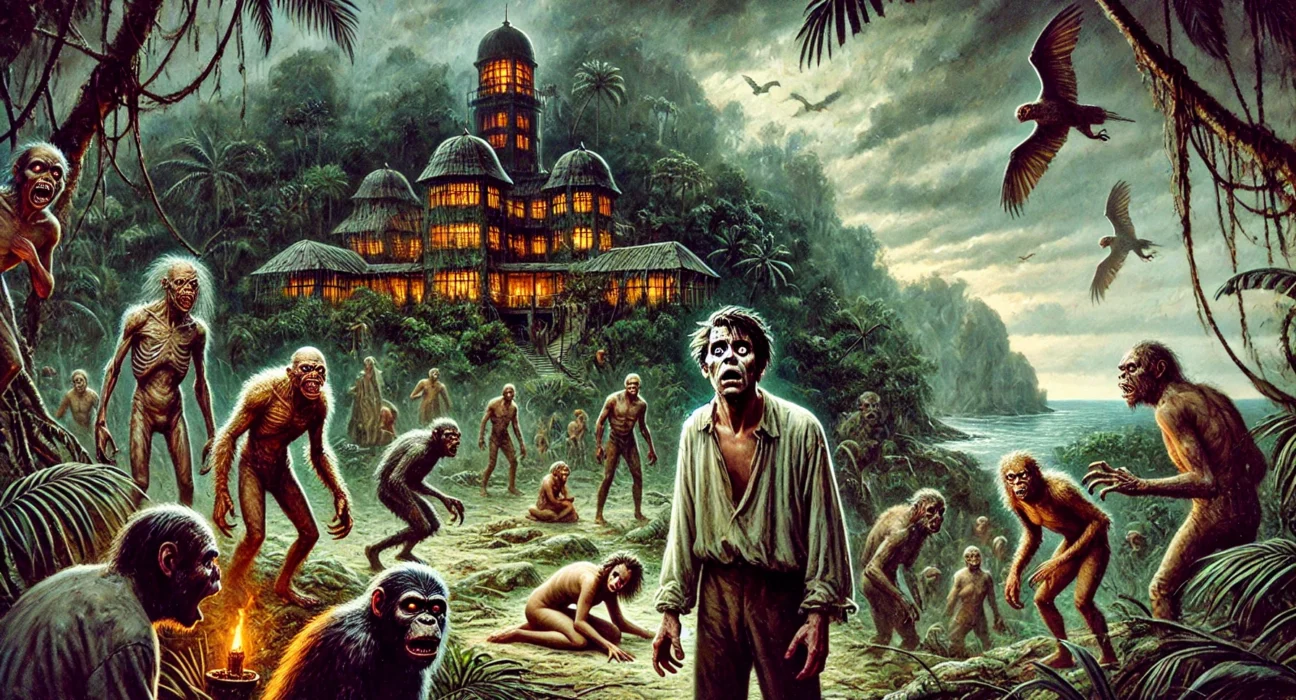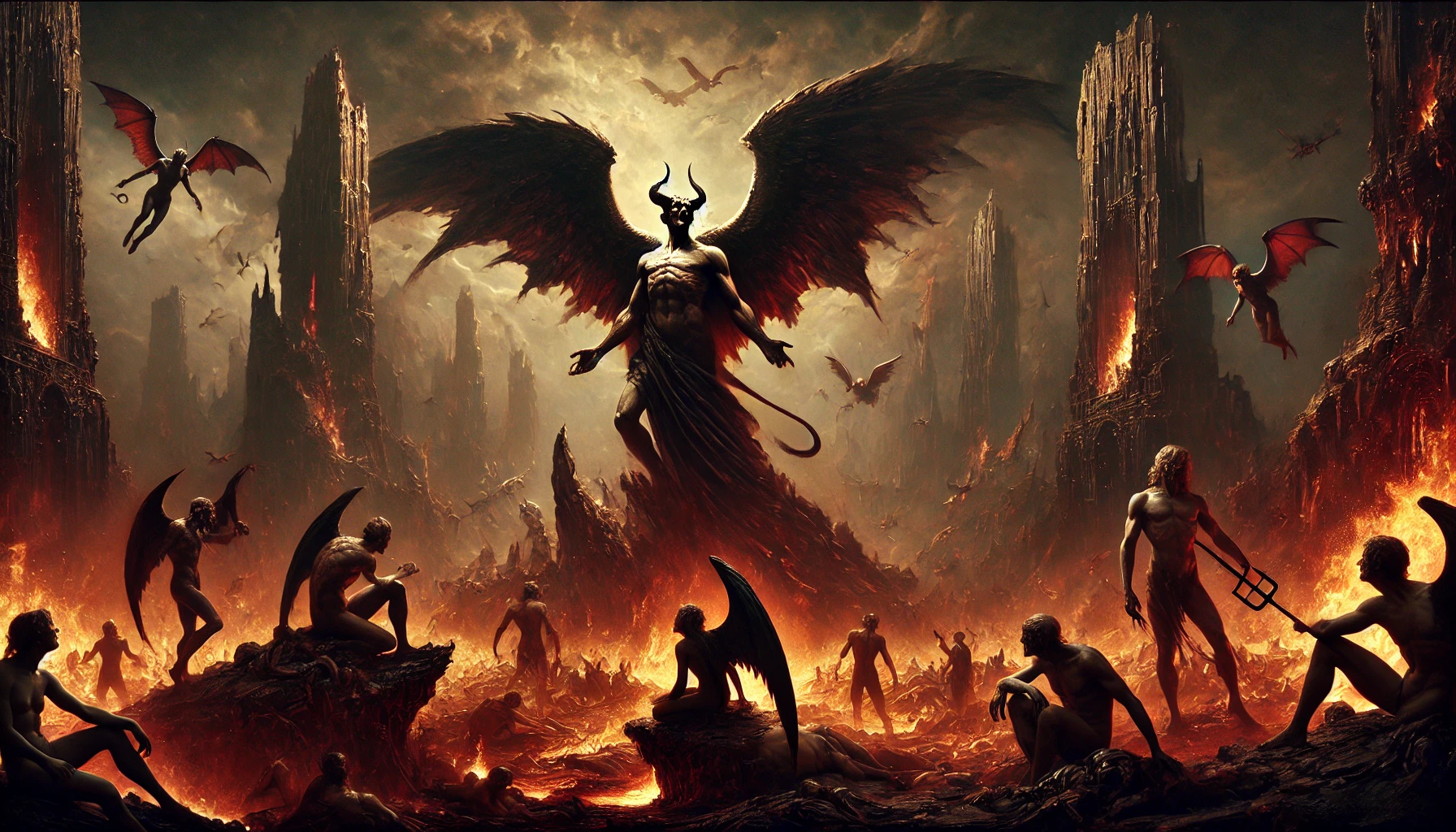The Island of Dr. Moreau is a science fiction novel written by H.G. Wells and first published in 1896. It explores profound ethical questions about science, morality, and the nature of humanity. The story follows Edward Prendick, a shipwrecked man who is rescued and brought to a mysterious island governed by Dr. Moreau, a scientist notorious for conducting experiments in vivisection. Through this dark and unsettling narrative, Wells delves into themes of cruelty, identity, and the consequences of unrestrained scientific exploration. The Island of Dr. Moreau remains a thought-provoking and disturbing tale that highlights the dangers of unchecked ambition and ethical transgressions.
Plot Summary
In the vast Pacific Ocean, a man named Edward Prendick is left adrift after a shipwreck. He is rescued by a passing schooner, captained by a drunken man named Davies. Aboard the vessel, Prendick meets Montgomery, a mysterious and somewhat disillusioned man who tends to the ship’s cargo of strange animals. As the schooner nears an isolated island, Montgomery and his peculiar assistant, a creature with odd, animal-like features, prepare to disembark. Despite Prendick’s protests, he is unceremoniously cast off into the dinghy, forced to accompany them to this remote and foreboding place.
The island is under the control of Dr. Moreau, a figure from Prendick’s past whom he recalls as a disgraced physiologist driven from England years earlier for his unethical experiments. Moreau’s interest in vivisection had sparked public outrage, and now, far from the reach of civilized society, he continues his work without restraint. On this island, strange and terrifying creatures roam—beings that blur the line between man and beast, products of Moreau’s grotesque attempts to turn animals into humans through painful and invasive surgeries.
Prendick’s initial confusion and horror grow as he explores the island. He encounters the Beast Folk, a grotesque collection of creatures that speak, walk upright, and follow a primitive set of laws imposed by Moreau. These laws, designed to suppress their animalistic instincts, include rules such as “not to go on all fours” and “not to eat flesh.” Yet, there is a constant tension within the Beast Folk, a struggle between their imposed humanity and the primal urges that lurk just beneath the surface. Prendick realizes that Moreau has not succeeded in creating true humans, but rather tortured and hybridized creatures whose fragile sense of self constantly threatens to unravel.
As Prendick spends more time on the island, he comes to understand the hierarchy Moreau has created. At the top sits Moreau, playing the role of god, controlling his creations with threats and the promise of further pain if they disobey. Montgomery, Moreau’s disillusioned assistant, helps maintain this fragile order but becomes increasingly unstable as he drowns his guilt in alcohol. The Beast Folk, though terrified of Moreau, are constantly at risk of slipping back into their natural animalistic behaviors, their human characteristics nothing more than a thin veneer.
The turning point comes when Moreau’s latest experiment, a puma that he has been trying to mold into human form, escapes during one of his painful procedures. The creature’s flight is a catalyst for chaos. As Moreau pursues the puma through the dense jungle, the carefully maintained order begins to collapse. The Beast Folk, seeing Moreau wounded and vulnerable, start to question the authority of their maker. The laws that have kept their animal instincts in check begin to break down, and they slip further into their natural states.
Moreau is eventually killed by the puma, his body found torn apart in the forest. With Moreau dead, the power dynamic on the island shifts dramatically. Montgomery, already struggling with his own moral dilemmas, spirals into self-destruction. In a drunken stupor, he releases the Beast Folk from their confines, effectively dooming himself. The creatures, now free from the restraints of Moreau’s laws, turn on him, and Montgomery meets a brutal end.
Prendick, left alone on the island, is forced to contend with the growing anarchy among the Beast Folk. Without Moreau’s presence to instill fear and discipline, they begin to revert fully to their animal natures, and their society disintegrates into violence and chaos. The constant fear of being hunted or attacked consumes Prendick as he hides and waits for an opportunity to escape the island.
Over time, the Beast Folk’s regression accelerates. They begin to lose their ability to speak and walk upright, reverting entirely to their original forms. Prendick, though terrified, manages to avoid becoming their prey. His solitude, however, weighs heavily on him as the line between sanity and madness begins to blur. Stranded in a place where the distinctions between man and beast have all but disappeared, he wonders whether he, too, might lose his grip on humanity.
After months of isolation, a passing ship finally arrives. Prendick is rescued, but the horrors of the island stay with him. Returning to civilization, he finds himself haunted by what he has witnessed. Although he is physically free from the island, the experience has forever altered his perception of humanity. Surrounded by the bustle of city life, he can no longer look at his fellow men without seeing the animal instincts lurking beneath the surface. Prendick lives out his days in a state of alienation, never fully able to shake the feeling that the line separating man from beast is far thinner than he once believed.
Main Characters
Edward Prendick: The protagonist and narrator of the story, Prendick is a gentleman with a scientific background. After being shipwrecked, he finds himself on Moreau’s island, where he becomes increasingly horrified by the experiments conducted there. His journey is one of survival, both physically and mentally, as he grapples with the grotesque results of Moreau’s work.
Dr. Moreau: A brilliant but morally ambiguous scientist who has been exiled from England due to his extreme experiments. On the island, he performs vivisections, transforming animals into human-animal hybrids. Moreau embodies the theme of unrestrained scientific pursuit, showing little regard for the suffering his experiments cause.
Montgomery: Moreau’s assistant, a disgraced medical student who aids in Moreau’s experiments. He is a conflicted character, at once devoted to Moreau but also increasingly aware of the monstrous nature of their work. His moral ambiguity and alcohol dependence underscore his internal struggle.
The Beast Folk: A group of animal-human hybrids created by Dr. Moreau through his experiments. These creatures have their own hierarchy and are bound by “The Law,” a set of rules intended to suppress their animal instincts. However, they live in a state of constant tension between their human and animal natures, representing the fragility of civilization.
Theme
The Ethics of Science and Vivisection: At the heart of the novel is the question of whether science should have limits. Moreau’s experiments are aimed at turning animals into humans through painful procedures, raising moral questions about cruelty, suffering, and the limits of scientific ambition. The novel suggests that just because something can be done, it does not mean it should be.
Human vs. Animal Instincts: Wells explores the thin line between humanity and animality. The Beast Folk are constantly torn between their human traits and their animal instincts, mirroring the philosophical question of what it means to be human. Their ultimate regression to animalistic behavior suggests that civilization and morality may be thin veneers over our primal nature.
Isolation and Alienation: The island serves as a microcosm for isolation, not only geographically but also in terms of social and moral alienation. Prendick’s isolation from the civilized world intensifies his feelings of helplessness and fear. Moreau and Montgomery are similarly cut off, both physically and ethically, from the world of human decency.
The Corruption of Power and Knowledge: Dr. Moreau’s unchecked power over the island’s creatures symbolizes the dangers of playing god. His desire to reshape nature according to his own vision without regard for the consequences highlights the theme of corrupted power. His experiments result in suffering and chaos, showing the dangers of knowledge pursued without moral constraints.
Writing Style and Tone
H.G. Wells’s writing in The Island of Dr. Moreau is direct and suspenseful, with a focus on creating an atmosphere of dread and unease. The first-person narration by Prendick enhances the feeling of isolation and paranoia, as readers experience the horrors of the island through his eyes. Wells employs vivid, descriptive language to paint the grotesque details of Moreau’s experiments, evoking both fascination and revulsion. The tone is philosophical and often grim, as Wells critiques scientific hubris and explores the darker aspects of human nature.
The pacing of the novel alternates between moments of high tension and quiet reflection, allowing the reader to absorb both the physical horrors of the island and the existential questions it raises. Wells’s use of Gothic elements—such as the remote island setting, the morally ambiguous villain, and the grotesque creatures—creates a sense of dread that permeates the entire novel.
We hope this summary has sparked your interest and would appreciate you following Celsius 233 on social media:
There’s a treasure trove of other fascinating book summaries waiting for you. Check out our collection of stories that inspire, thrill, and provoke thought, just like this one by checking out the Book Shelf or the Library
Remember, while our summaries capture the essence, they can never replace the full experience of reading the book. If this summary intrigued you, consider diving into the complete story – buy the book and immerse yourself in the author’s original work.
If you want to request a book summary, click here.
When Saurabh is not working/watching football/reading books/traveling, you can reach him via Twitter/X, LinkedIn, or Threads
Restart reading!








